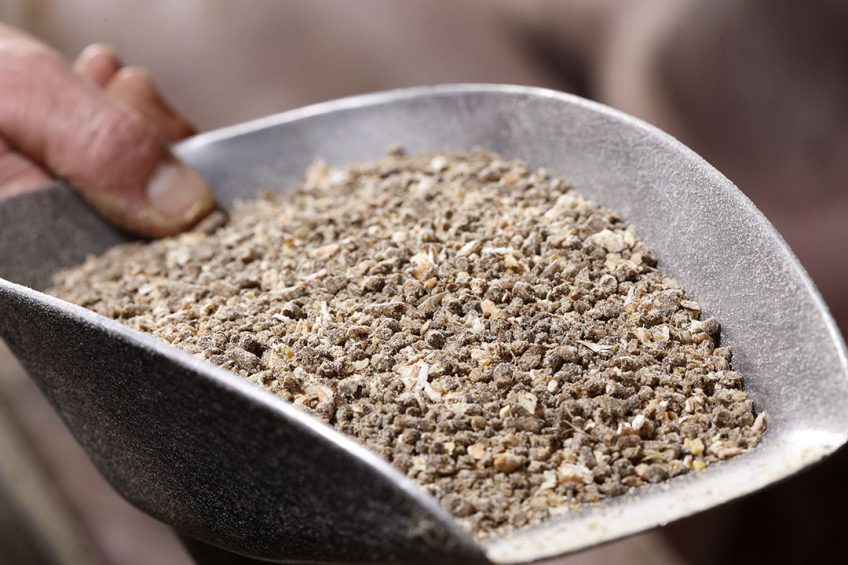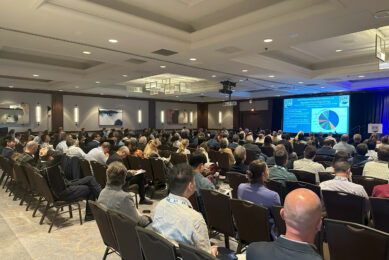US: More efficient approval of new feed ingredients

New staff are being trained at the US Food & Drug Administration to deal with a backlog of applications. A framework is also being created for allowing novel claims related to the environment, animal performance and more.
The American Feed Industry Association (AFIA) and the US government have agreed that in order for the US feed industry to grow and expand its research into animal nutrition, a clear and efficient process is needed to approve new ingredients.
“We need a reliable regulatory system for the safety reviews and approvals, and unfortunately this process has not always been the most efficient,” explains Leah Wilkinson, AFIA vice president of public policy and education. “It’s a priority for our members to have an appropriate response and timeframe for applications for review of new ingredients. The US falls behind other countries in this area, and therefore our member-companies are not bringing products forward in the US as they are elsewhere. We are very pleased the US Food & Drug Administration (FDA) has responded to our concerns and we are excited about the current and future progress.”
Backlog in feed ingredient applications
Simply put, there has not been enough capacity to review ingredients at the Division of Animal Feeds at the FDA’s Center for Veterinary Medicine (CVM). “There is a huge backlog in applications,” says Wilkinson. “We estimate that this backlog has already resulted in $ 1.75 million in lost revenue for every year of delay to feed ingredient manufacturers, and while we have no way to estimate the losses that livestock producers have experienced because they have not had the benefits of using new products, it is surely significant.”
Sustainable feed ingredients
Wilkinson explains that the types of ingredients to be approved run the full range, but many focus on sustainability. Examples include enzymes that boost feed efficiency in various livestock species and insect meal from insects that consume food waste (a so-called ‘circular economy’ feed).
Approval process takes 3-5 years
According to Wilkinson, the approval process for a non-drug feed ingredient in the US is typically 3 to 5 years and the only claims currently allowable relate to taste, nutrition or aroma. “However, these ingredients have other benefits and right now, manufacturers aren’t able to make claims related to those benefits, although they have the science to prove them,” she explains. “We are very pleased the FDA is reviewing this interpretation of the regulatory policy so that substances that improve production or reduce environmental impact can have associated claims and be regulated as feeds when appropriate. As I’ve said, other countries are already ahead of the US on this.”
Increase staff numbers
In 2020, the FDA agreed to allocate US$ 5 million for 12 new staff for the review and approval of new livestock feed ingredients. (The CVM Division of Animal Feeds also handles many areas beyond pre-market ingredient reviews, namely regulation of medicated feeds and issues related to feed contaminants.) “The resources for the new hires are welcome, as the innovative products that various companies are coming up with certainly keeps us busy,” explains Dr David Edwards, who has served as the CVM director of animal feeds for the past 6 years. “We’ve ended up onboarding 12 new reviewers who started in September 2020 and are being trained now. They are a diverse group, including toxicologists, microbiologists, animal scientists, chemists and veterinarians and they are learning everything to do with regulatory processes and legal review. They’ve also been integrated with our existing pre-market review team that they learn from other reviewers.”
Update of the feed ingredient policy
Edwards and his colleagues also recognise the need to update the policy interpretations for feed ingredient approval, whether the claims relate to reduced environmental impact, improved food safety or improvements to animal well-being or production.
“We’ve heard from the stakeholders about their concerns and we understand the environment has changed in terms of needs and wants,” he says. “We’re looking at changes that can accommodate these claims, and we must also make sure any changes are done in a strategic long-term way.”
He explains that for each type of claim, a determination will be made for what is allowable under the law relating to existing definitions of ingredients that go into animal feed. “We are looking into how much flexibility exists in those definitions in terms of how they are worded,” Edwards says. “We have to look at where claims might fall and that’s based on intended use. One example is greenhouse gas emissions reduction. Another example is the impact on production’ claims and/or human food safety claims where you might be able to create a safer human food by feeding a certain substance to an animal.”
The aim, Edwards says, is to have truthful claims that do not mislead producers in any way, and to roll out an updated framework in a fair way, so that claims for existing products and products that are new are accommodated in a fair and integrated manner. “We anticipate that claims will be desired on both these group of products,” he says. “We’re not sure yet, however, if we would roll out the framework for all claims at the same time or in groups. We would need, as well, to make sure our framework is able to adapt to new types of claims, and that we have conversations with industry to make sure the changes, when released, will be well-understood.”
Additives to prevent ASF
A quick and smooth review process is “doubly important for anyone interested in pursuing an animal food additive intended to mitigate African swine fever (ASF),” noted Edwards in a 2020 AFIA guest blog entry. “FDA is committed to working with sponsors to facilitate the development and approval of products intended to prevent ASF infection and spread. Because there are several pathways to consider, we encourage sponsors interested in bringing such products to the marketplace to consult with our experts early in your development process. While FDA is committed to ushering all food additive petitions through the review process as expeditiously as possible, we are prepared to prioritize reviews for food additives that are meant to mitigate ASF.”
For the entire framework, there is no estimated timeline for completion that Edwards can supply, but with the new hires – and also with CVM staff taking a hard look at what other countries have done with new types of claims for feed ingredients – completion will occur as soon as possible.











